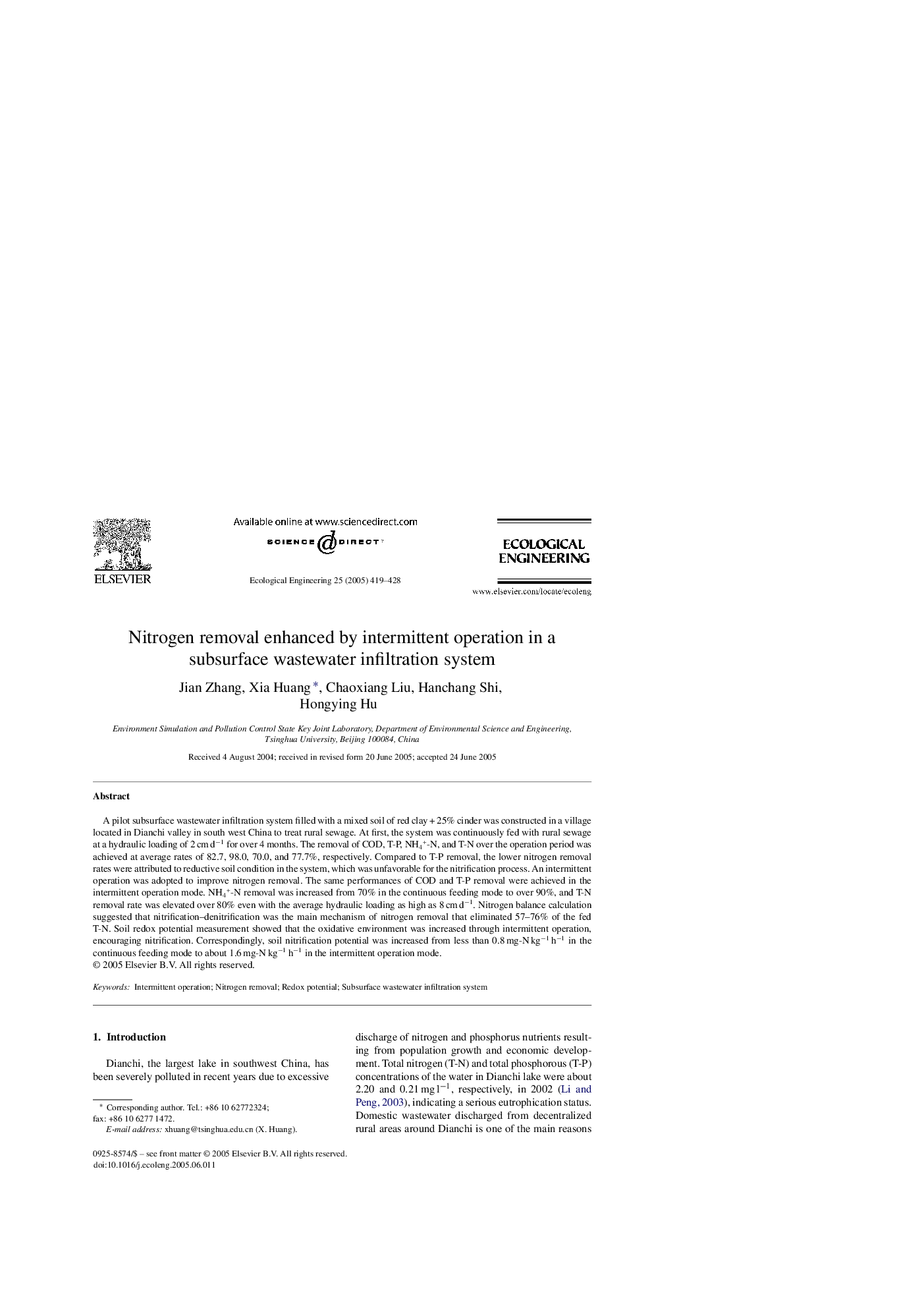| Article ID | Journal | Published Year | Pages | File Type |
|---|---|---|---|---|
| 9447566 | Ecological Engineering | 2005 | 10 Pages |
Abstract
A pilot subsurface wastewater infiltration system filled with a mixed soil of red clay + 25% cinder was constructed in a village located in Dianchi valley in south west China to treat rural sewage. At first, the system was continuously fed with rural sewage at a hydraulic loading of 2 cm dâ1 for over 4 months. The removal of COD, T-P, NH4+-N, and T-N over the operation period was achieved at average rates of 82.7, 98.0, 70.0, and 77.7%, respectively. Compared to T-P removal, the lower nitrogen removal rates were attributed to reductive soil condition in the system, which was unfavorable for the nitrification process. An intermittent operation was adopted to improve nitrogen removal. The same performances of COD and T-P removal were achieved in the intermittent operation mode. NH4+-N removal was increased from 70% in the continuous feeding mode to over 90%, and T-N removal rate was elevated over 80% even with the average hydraulic loading as high as 8 cm dâ1. Nitrogen balance calculation suggested that nitrification-denitrification was the main mechanism of nitrogen removal that eliminated 57-76% of the fed T-N. Soil redox potential measurement showed that the oxidative environment was increased through intermittent operation, encouraging nitrification. Correspondingly, soil nitrification potential was increased from less than 0.8 mg-N kgâ1 hâ1 in the continuous feeding mode to about 1.6 mg-N kgâ1 hâ1 in the intermittent operation mode.
Keywords
Related Topics
Life Sciences
Agricultural and Biological Sciences
Ecology, Evolution, Behavior and Systematics
Authors
Jian Zhang, Xia Huang, Chaoxiang Liu, Hanchang Shi, Hongying Hu,
